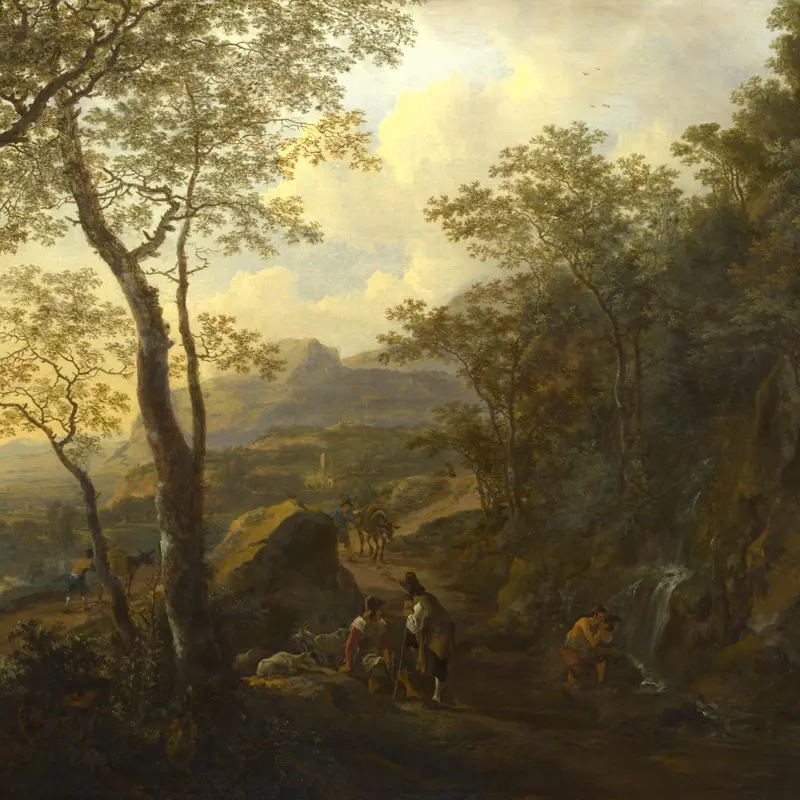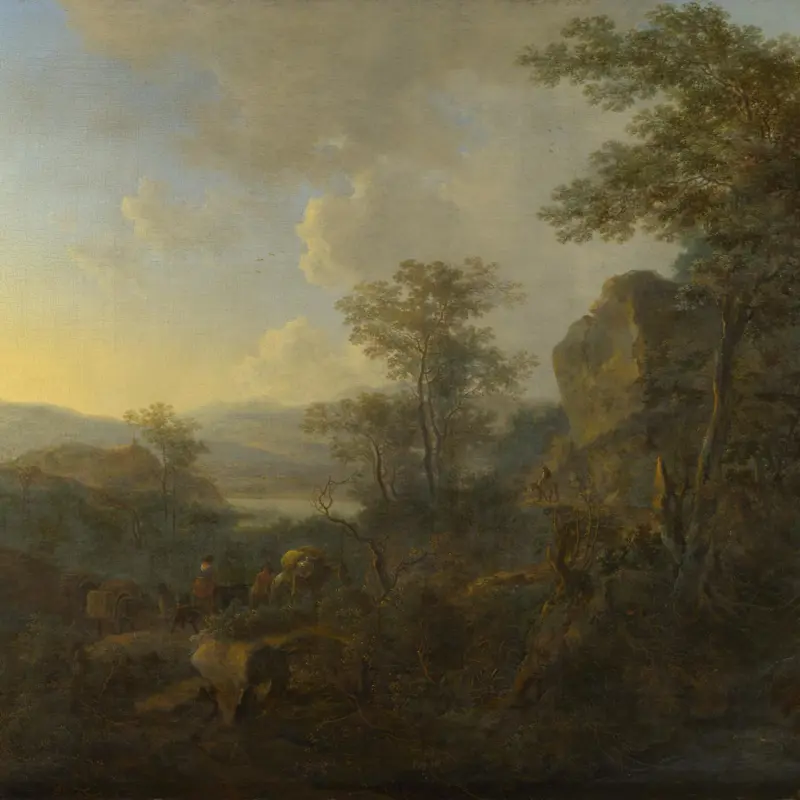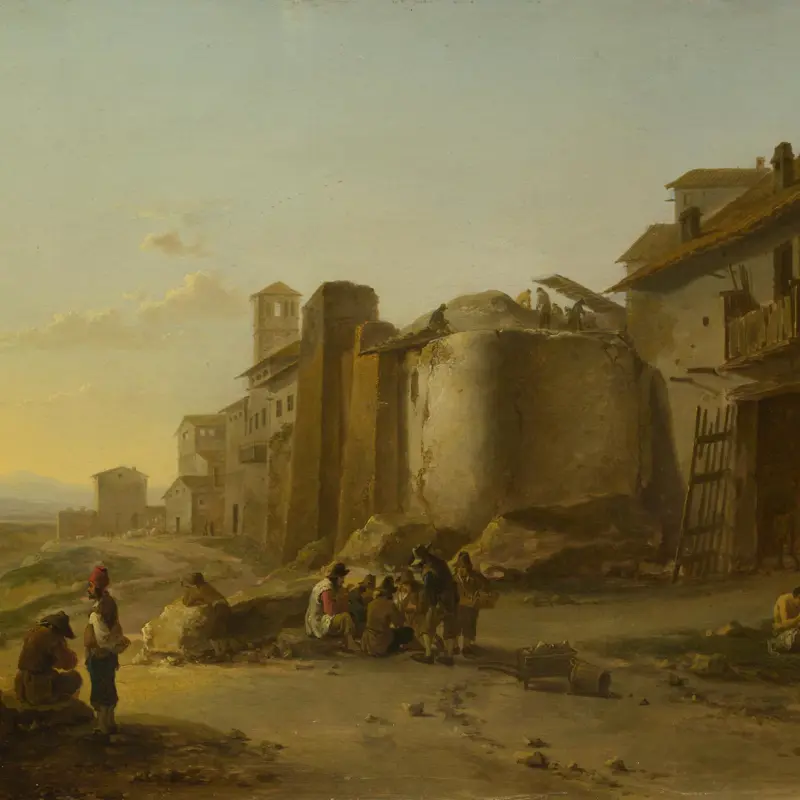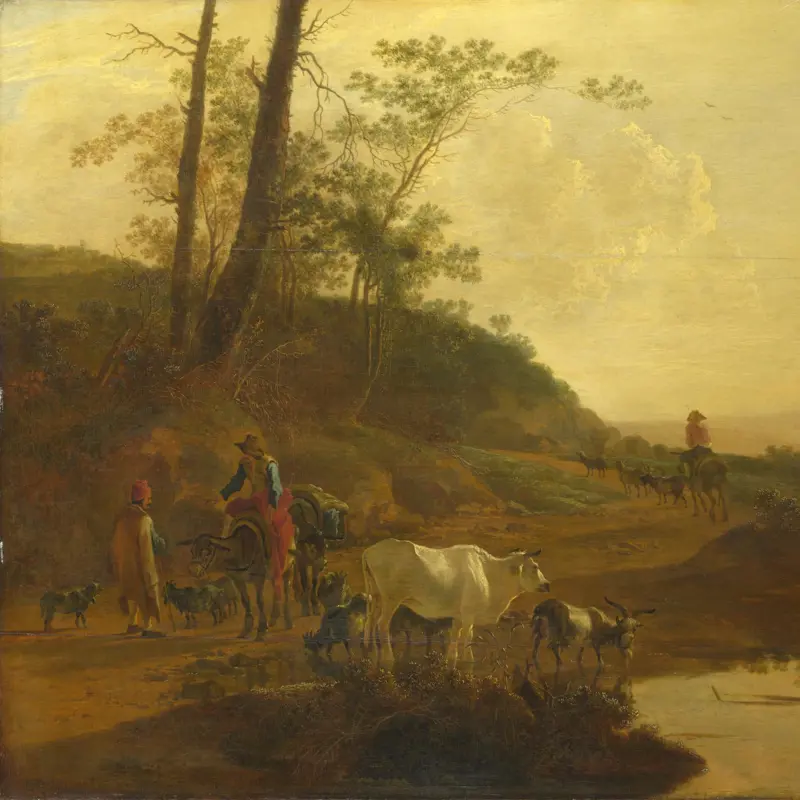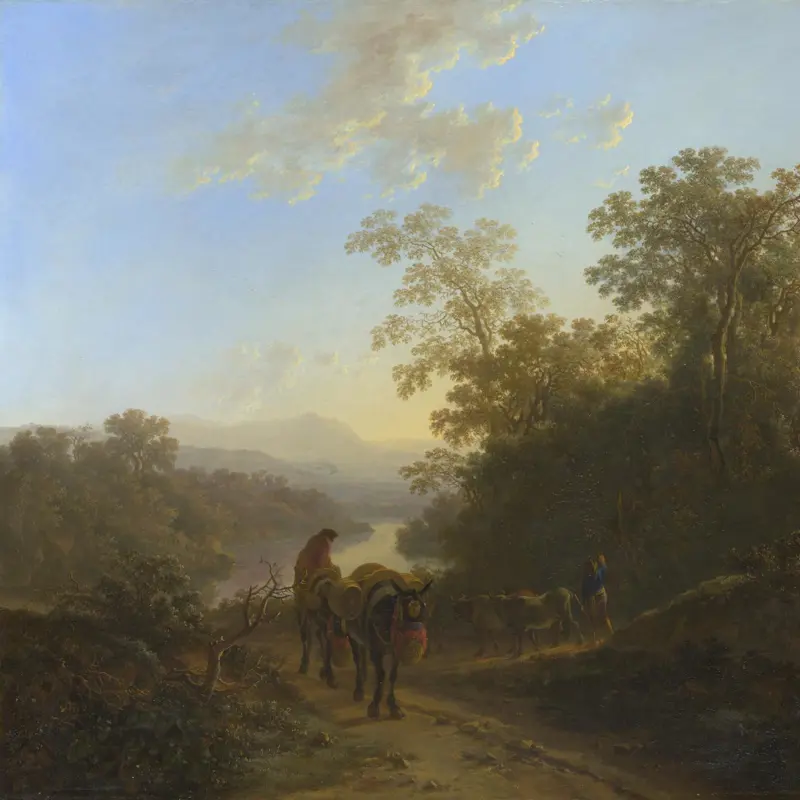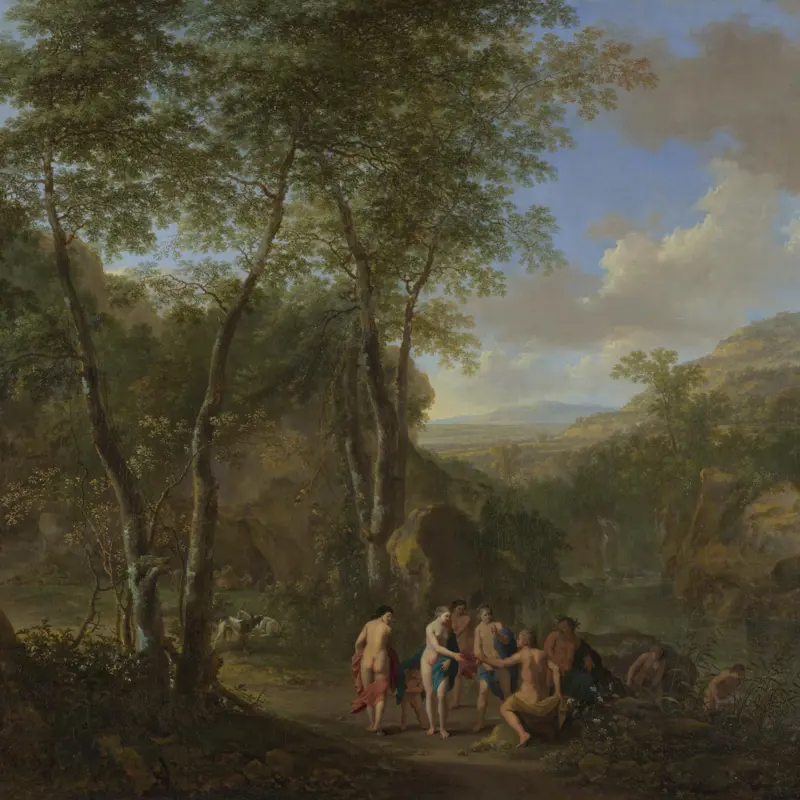Jan Both, 'A Rocky Landscape with an Ox-cart', about 1640-5
About the work
Overview
A shaft of light from the low sun seems to point the way forward for the ox cart between the craggy cliffs. Long-haired goats chew on the brittle leaves of scrubby plants, but there’s lush greenery on the distant hillside above the lake. The cart is laden with household goods resting on straw, suggesting either that the driver is moving house or, more likely, that he’s a travelling trader.
During Jan Both’s three-year stay in Rome he befriended Claude, the great French landscape painter. Claude’s style influenced the young Both, which can be seen in this picture: a gold evening or early morning light, deep shadow in the foreground and a misty distance, hidden castles and towers, and slender birch trees with a fine tracery of leaves against the sky.
Key facts
Details
- Full title
- A Rocky Landscape with an Ox-cart
- Artist
- Jan Both
- Artist dates
- About 1615 - 1652
- Date made
- About 1640-5
- Medium and support
- Oil on canvas
- Dimensions
- 120.5 × 160.5 cm
- Inscription summary
- Signed
- Acquisition credit
- Bequeathed by Lord Cheylesmore, 1902
- Inventory number
- NG1917
- Location
- Not on display
- Collection
- Main Collection
- Previous owners
Provenance
Additional information
Text extracted from the ‘Provenance’ section of the catalogue entry in Neil MacLaren, revised and expanded by Christopher Brown, ‘National Gallery Catalogues: The Dutch School: 1600–1900’, London 1991; for further information, see the full catalogue entry.
Bibliography
-
1829
J. Smith, A Catalogue Raisonné of the Works of the Most Eminent Dutch, Flemish, and French Painters: In Which is Included a Short Biographical Notice of the Artists, with a Copious Description of Their Principal Pictures […], 9 vols, London 1829-1842
-
1852Christie & Manson, Catalogue of Pictures, of High Class, the Property of… The Earl of Shaftesbury, Deceased, and Removed from St. Giles's Park, London, 15 May 1852
-
1907C. Hofstede de Groot, Catalogue Raisonné of the Works of the Most Eminent Dutch Painters of the Seventeenth Century, 10 vols, London 1907
-
1907C. Hofstede de Groot, Catalogue Raisonné of the Works of the Most Eminent Dutch Painters of the Seventeenth Century, 10 vols, London 1907
-
1960Maclaren, Neil, National Gallery Catalogues: The Dutch School, 2 vols, London 1960
-
1991Maclaren, Neil, revised by Christopher Brown, National Gallery Catalogues: The Dutch School, 1600-1900, 2nd edn (revised and expanded), 2 vols, London 1991
-
2001
C. Baker and T. Henry, The National Gallery: Complete Illustrated Catalogue, London 2001
About this record
If you know more about this work or have spotted an error, please contact us. Please note that exhibition histories are listed from 2009 onwards. Bibliographies may not be complete; more comprehensive information is available in the National Gallery Library.

